Magnetoelectric PVDF–Cobalt Ferrite Films: Magnetostrictive and Magnetorotational Effects, Synergy, and Counteraction
Abstract
:1. Introduction
1.1. Magnetostrictive Composites
1.2. Magnetoactive (Magnetorotational) Composites
2. Model of a Polymer Composite ME Film
2.1. Problem Statement
2.2. Magnetostrictive Deformation of a CFO Particle
2.3. Magnetic Torque Acting on a Particle
3. Energy Functional of the Composite
3.1. Energy of the Composite with a Piezoelectric Matrix
3.2. Derivation of the Variational Equation
4. Numerical Calculation
- –
- magnetization G, anisotropy field kOe,
- –
- magnetostriction constants ppm and ppm,
- –
- dielectric permittivity ,
- –
- Young’s modulus GPa, Poisson’s ratio ;
- –
- dielectric permittivity ,
- –
- Young’s modulus GPa, Poisson’s ratio ;
- –
- , all – in CGS units;
- –
- particle radius nm, cube side nm,
- –
- applied magnetic field kOe.
5. Results
6. Discussion
7. Conclusions
Author Contributions
Funding
Data Availability Statement
Acknowledgments
Conflicts of Interest
Appendix A
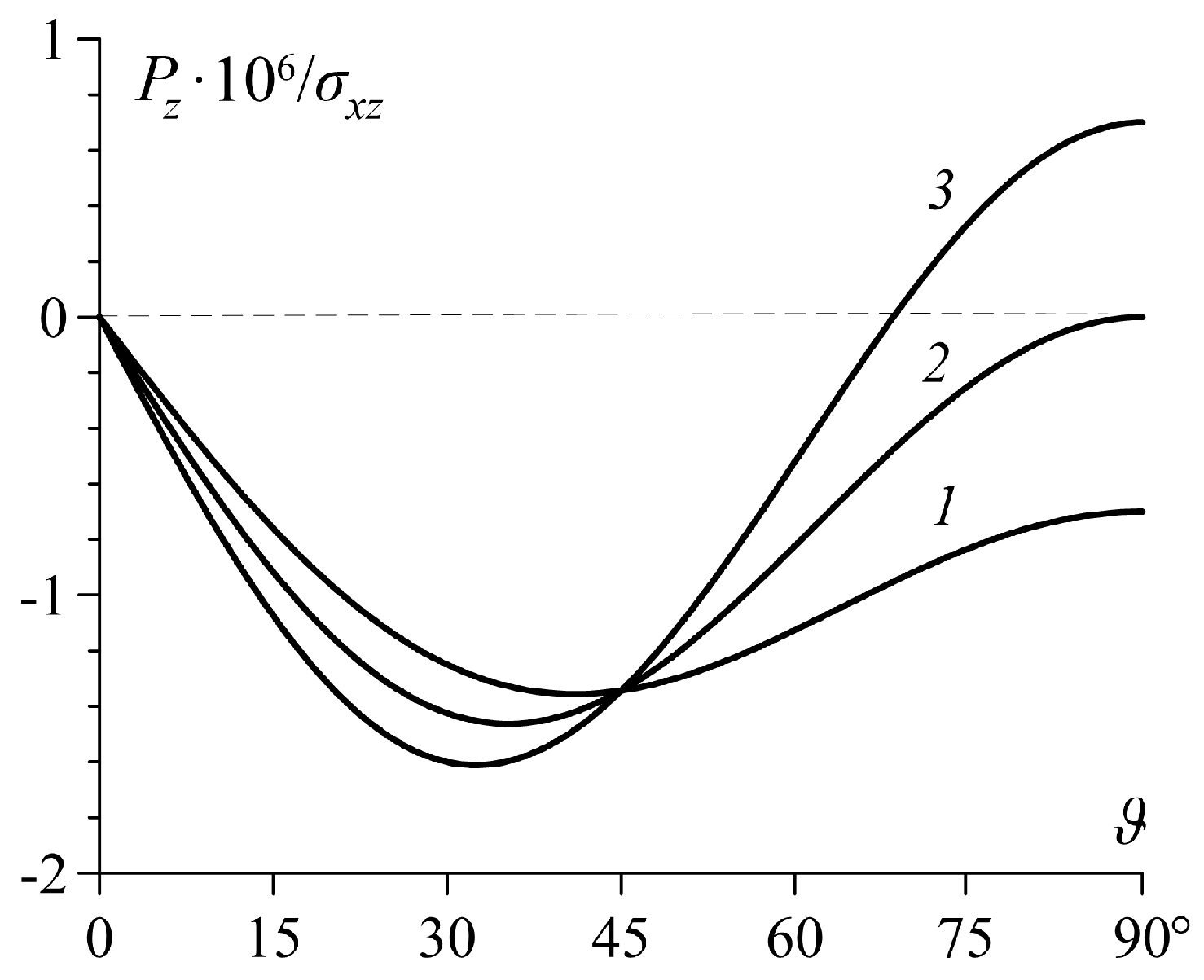
References
- Liang, X.; Matyushov, A.; Hayes, P.; Schell, V.; Dong, C.; Chen, H.; He, Y.; Will-Cole, A.; Quandt, E.; Martins, P.; et al. Roadmap on magnetoelectric materials and devices. IEEE Trans. Magn. 2021, 57, 400157. [Google Scholar] [CrossRef]
- Fernandes, C.L.; Correia, D.M.; Tariq, M.; Esperansa, J.M.X.X.; Martins, P.; Lanceros-Méndez, S. Multifunctional magnetoelectric sensing and bending actuator response of polymer-based hybrid materials with magnetic ionic liquids. Nanomaterials 2023, 13, 2186. [Google Scholar] [CrossRef] [PubMed]
- Pourhosseiniasl, M.; Gao, X.; Kamalisiahroudi, S.; Yu, Z.; Chu, Z.; Yang, J.; Lee, H.; Dong, S. Versatile power and energy conversion of magnetoelectric composite materials with high efficiency via electromechanical resonance. NanoEnergy 2020, 70, 104506. [Google Scholar] [CrossRef]
- Jiang, J.; Liu, S.; Feng, L.; Zhao, D. A review of piezoelectric vibration energy harvesting with magnetic coupling based on different structural characteristics. Micromachines 2021, 12, 436. [Google Scholar] [CrossRef]
- Díaz, E.; Valle, M.B.; Ribeiro, S.; Lanceros-Mendez, S.; Barandiarán, J.M. Development of magnetically active scaffolds for bone regeneration. Nanomaterials 2018, 8, 678. [Google Scholar] [CrossRef]
- Kapat, K.; Shubhra, Q.T.H.; Zhou, M.; Leeuwenburgh, S. Piezoelectric nano-biomaterials for biomedicine and tissue regeneration. Adv. Funct. Mater. 2020, 30, 1909045. [Google Scholar] [CrossRef]
- Kopyl, S.; Surmenev, R.; Surmeneva, M.; Fetisov, Y.; Kholkin, A. Magnetoelectric effect: Principles and applications in biology and medicine—A review. Mater. Today Bio 2021, 12, 100149. [Google Scholar] [CrossRef]
- Silva, C.A.; Fernandes, M.M.; Ribeiro, C.; Lanceros-Méndez, S. Two- and three-dimensional piezoelectric scaffolds for bone tissue engineering. Colloids Surfaces Biointerfaces 2022, 218, 112708. [Google Scholar] [CrossRef]
- Zhao, H.; Liu, C.; Liu, Y.; Ding, Q.; Wang, T.; Li, H.; Wu, H.; Ma, T. Harnessing electromagnetic fields to assist bone tissue engineering. Stem Cell Res. Theory 2023, 14, 7. [Google Scholar] [CrossRef]
- Sharma, M.; Madras, G.; Bose, S. Process induced electroactive polymorph in PVDF: Effect on dielectric and ferroelectric properties. Phys. Chem. Chem. Phys. 2014, 16, 14792–14799. [Google Scholar] [CrossRef]
- Ruan, L.; Yao, X.; Chang, Y.; Zhou, L.; Qin, G.; Zhang, X. Properties and applications of the β phase poly(vinylidene fluoride). Polymers 2018, 10, 228. [Google Scholar] [CrossRef] [PubMed]
- Nivedhitha, D.M.; Subramanian, J. Polyvinylidene fluoride, an advanced futuristic smart polymer material: A comprehensive review. Polym. Adv. Technol. 2023, 34, 474–505. [Google Scholar] [CrossRef]
- Correia, D.M.; Gonçalves, R.; Ribeiro, C.; Sencadas, V.; Botelho, G.; Ribelles, J.L.G.; Lanceros-Méndez, S. Electrosprayed poly(vinylidene fluoride) microparticles for tissue engineering applications. RSC Adv. 2014, 4, 33013–33021. [Google Scholar] [CrossRef]
- Gonçalves, R.; Martins, P.; Correia, D.M.; Sencadas, V.; Vilas, J.L.; León, L.M.; Botelho, G.; Lanceros-Méndez, S. Development of magnetoelectric CoFe2O4/poly(vinylidene fluoride) microspheres. RSC Adv. 2015, 5, 35852–35857. [Google Scholar] [CrossRef]
- Omelyanchik, A.; Antipova, V.; Gritsenko, C.; Kolesnikova, V.; Murzin, D.; Han, Y.; Turutin, A.V.; Kubasov, I.V.; Kislyuk, A.M.; Ilina, T.X.; et al. Boosting magnetoelectric effect in polymer-based nanocomposites. Nanomaterials 2021, 11, 1154. [Google Scholar] [CrossRef]
- Martins, L.A.; Ródenas-Rochina, J.; Salazar, D.; Cardoso, V.F.; Ribelles, J.L.G.; Lanceros-Méndez, S. Microfluidic processing of piezoelectric and magnetic responsive electroactive microspheres. ACS Appl. Polym. Mater. 2017, 4, 5368–5379. [Google Scholar] [CrossRef]
- Nan, C.W.; Bichurin, M.I.; Dong, X.; Viehland, D.; Srinivasan, G. Multiferroic magnetoelectric composites: Historical perspective, status, and future directions. J. Appl. Phys. 2008, 103, 031101. [Google Scholar] [CrossRef]
- Ma, J.; Hu, J.; Li, Z.; Nan, C.W. Recent progress in multiferroic magnetoelectric composites: From bulk to thin films. Adv. Mater. 2011, 23, 1062–1087. [Google Scholar] [CrossRef]
- Acosta, M.; Novak, N.; Rojas, V.; Patel, S.; Vaish, R.; Koruza, J.; Rossetti, G.A.; Rödel, J. BaTiO3-based piezoelectrics: Fundamentals, current status, and perspectives. Appl. Phys. Rev. 2018, 4, 041305. [Google Scholar] [CrossRef]
- Ferson, N.D.; Uhl, A.M.; Andrew, J.S. Piezoelectric and magnetoelectric scaffolds for tissue regeneration and biomedicine: A Review. IEEE Trans. Ultrason. Ferroelectr. Freq. Control 2020, 68, 229–241. [Google Scholar] [CrossRef]
- Meng, Y.; Chen, G.; Huang, M. Piezoelectric materials: Properties, advancements, and design strategies for high-temperature applications. Nanomaterials 2022, 12, 1171. [Google Scholar] [CrossRef] [PubMed]
- Zhang, J.; Chen, X.; Wang, X.; Fang, C.; Weng, G.J. Magnetic, mechanical, electrical properties and coupling effects of particle reinforced piezoelectric polymer matrix composites. Compos. Struct. 2022, 304, 116450. [Google Scholar] [CrossRef]
- Stolbov, O.V.; Raikher, Y.L. Magnetostrictive and magnetoactive effects in piezoelectric polymer composites. Nanomaterials 2024, 14, 31. [Google Scholar] [CrossRef]
- Stoner, E.L.; Wohlfarth, E.P. A mechanism of magnetic hysteresis in heretrogeneous alloys. Philos. Trans. R. Soc. London Ser. A 1948, 240, 599–642. [Google Scholar] [CrossRef]
- Stoner, E.L.; Wohlfarth, E.P. A mechanism of magnetic hysteresis in heretrogeneous alloys. IEEE Trans. Magn. 1991, 27, 3475–3518. [Google Scholar] [CrossRef]
- Virden, A.; Wells, S.; O’Grady, K. Physical and magnetic properties of highly anisotropic cobalt ferrite particles. J. Magn. Magn. Mater. 2007, 316, e768–e772. [Google Scholar] [CrossRef]
- Vonsovskii, S.V. Magnetism; Halsted: New York, NY, USA, 1975. [Google Scholar]
- Bozorth, R.; Tilden, E.; Williams, A. Anisotropy and magnetostriction of some ferrites. Phys. Rev. 1955, 99, 1788–1798. [Google Scholar] [CrossRef]
- Belov, K.P. Magnetostriction Phenomena and Their Technical Applications; Nauka: Moscow, Russia, 1987. (In Russian) [Google Scholar]
- Landau, L.D.; Lifshitz, E.M. Theory of Elasticity; Pergamon: Oxford, UK, 1970. [Google Scholar]
- Landau, L.D.; Lifshitz, E.M. Electrodynamics of Continuous Media, 2nd ed.; Elsevier: Amsterdam, The Netherland, 1984. [Google Scholar]
- Holterman, J.; Groen, P. An Introduction to Piezoelectric Materials and Components; Stichting Applied Piezo: Apeldoorn, The Netherlands, 2012. [Google Scholar]
- Ueberschlag, P. PVDF piezoelectric polymer. Sens. Rev. 2001, 21, 118–125. [Google Scholar] [CrossRef]
- Lovinger, A.J. Recent developments in the structure, properties and applications of ferroelectric polymers. Jpn. J. Appl. Phys. 1985, 24, S2.18–S2.22. [Google Scholar] [CrossRef]
- Wang, H.; Zhang, Q.M.; Cross, L.E.; Sykes, A.O. Piezoelectric, dielectric, and elastic properties of poly(vinylidene fluoride/trifluoroethylene). J. Appl. Phys. 1985, 74, 3394–3398. [Google Scholar] [CrossRef]
- FEniCS Project. Available online: http://www.fenicsproject.org (accessed on 21 March 2025).
- Tang, B.; Zhuang, J.; Wang, L.; Zhang, B.; Lin, S.; Jia, F.; Dong, L.; Wang, Q.; Cheng, K.; Weng, W. Harnessing cell dynamic responses on magnetoelectric nanocomposite films to promote osteogenic differentiation. ACS Appl. Mater. Interfaces 2018, 10, 7841–7851. [Google Scholar] [CrossRef] [PubMed]
- Liu, W.; Zhang, F.; Yan, Y.; Zhang, C.; Zhao, H.; Heng, B.; Huang, Y.; Shen, Y.; Zhang, J.; Chen, L.; et al. Remote tuning of built-in magnetoelectric microenvironment to promote bone regeneration by modulating cellular exposure to arginylglycylaspartic acid peptide. Adv. Funct. Mater. 2021, 31, 2006226. [Google Scholar] [CrossRef]
- Nix, E.L.; Ward, I.M. The measurement of the shear piezoelectric coefficients of polyvinylidene fluoride. Ferroelectrics 1986, 67, 137–141. [Google Scholar] [CrossRef]
- Omote, K.; Ohigashi, H. Shear piezoelectric properties of vinylidene fluoride trifluoroethylene copolymer, and its application to transverse ultrasonic transducers. Appl. Phys. Lett. 1995, 66, 2215–2217. [Google Scholar] [CrossRef]
- Omote, K.; Ohigashi, H.; Koga, K. Temperature dependence of elastic, dielectric, and piezoelectric properties of “single crystalline” films of vinylidene fluoride trifluoroethylene copolymer. J. Appl. Phys. 1997, 81, 2760–2769. [Google Scholar] [CrossRef]
- Kochervinski, V.V. Piezoelectricity in crystallizing ferroelectric polymers: poly(vinylidene fluoride) and its copolymers (A Review). Crystallogr. Rep. 2003, 48, 649–675. [Google Scholar] [CrossRef]
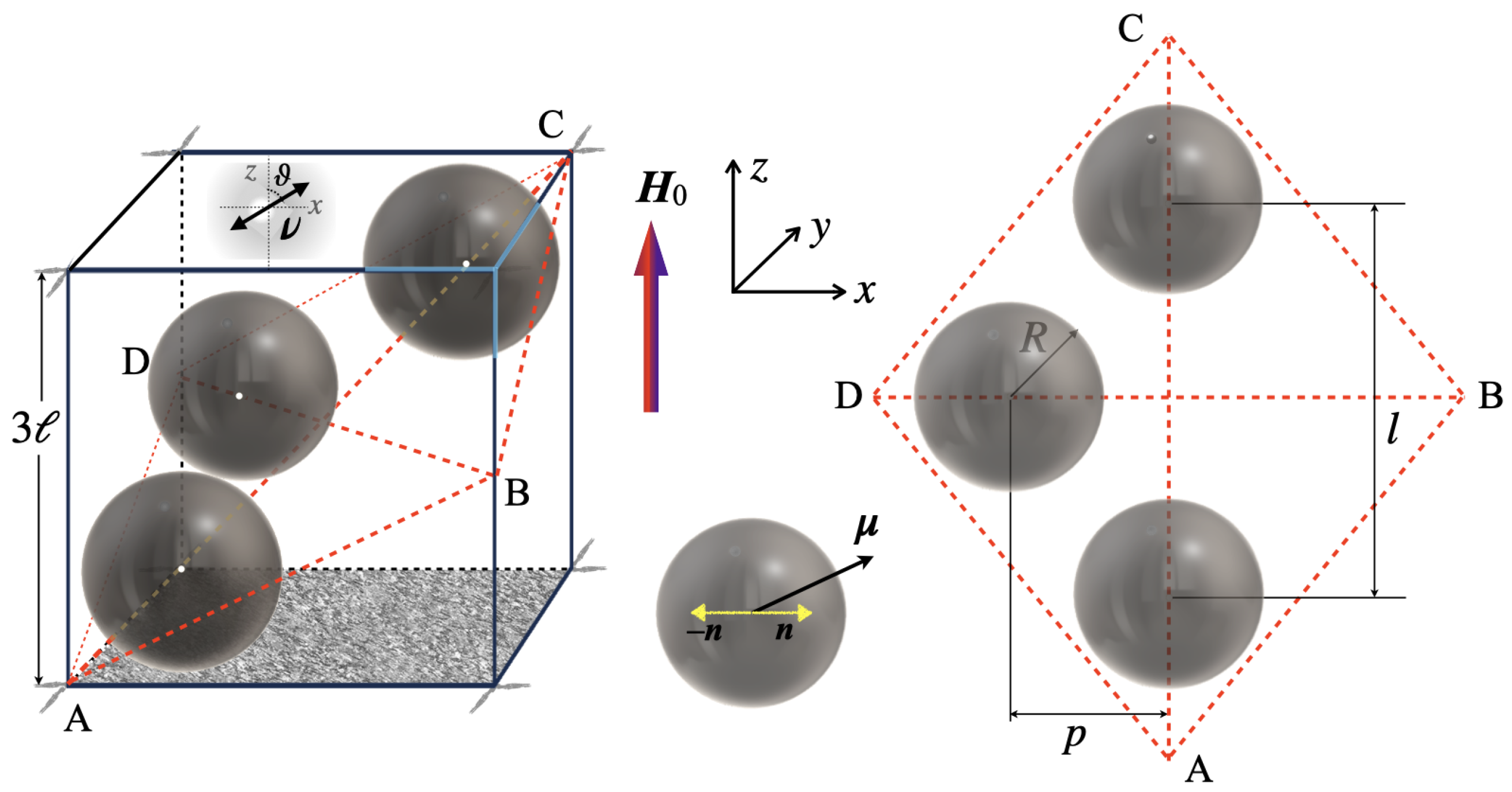
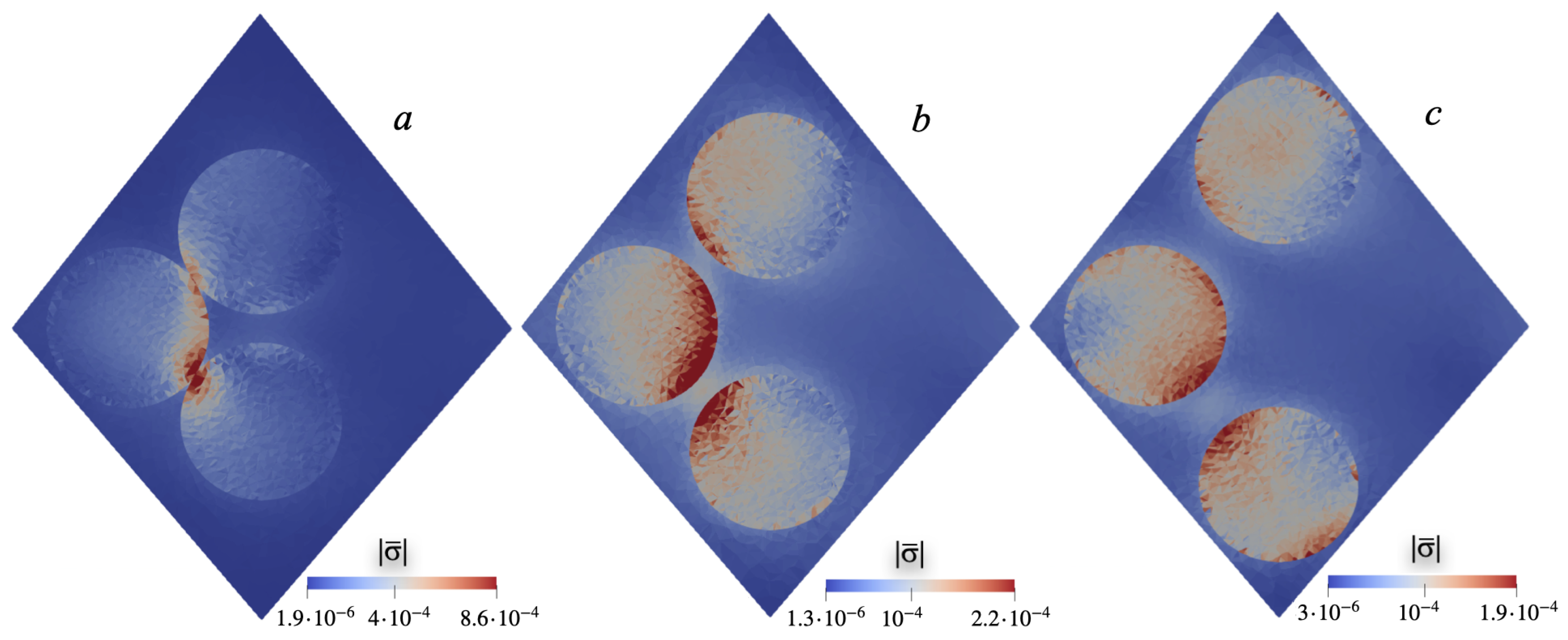
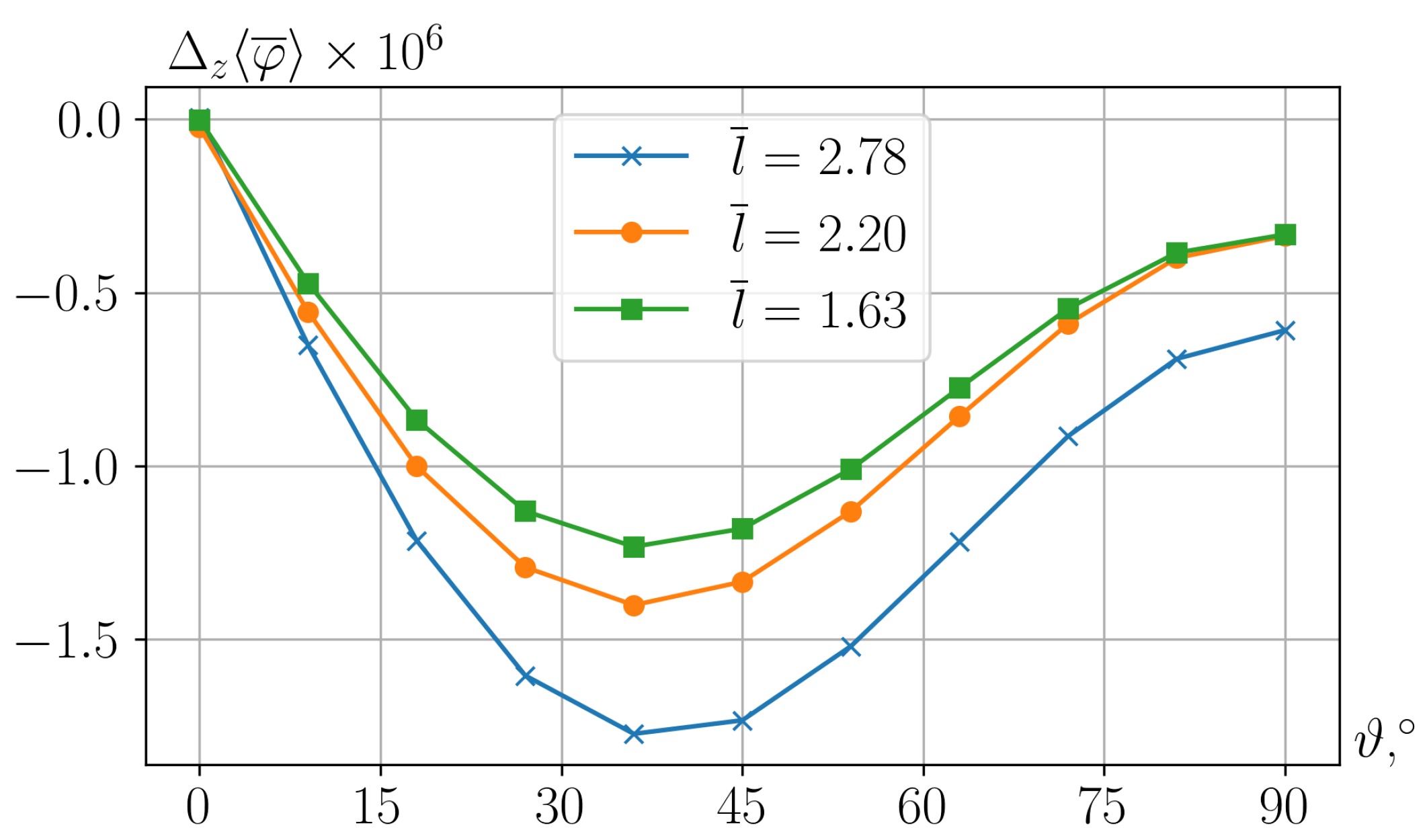
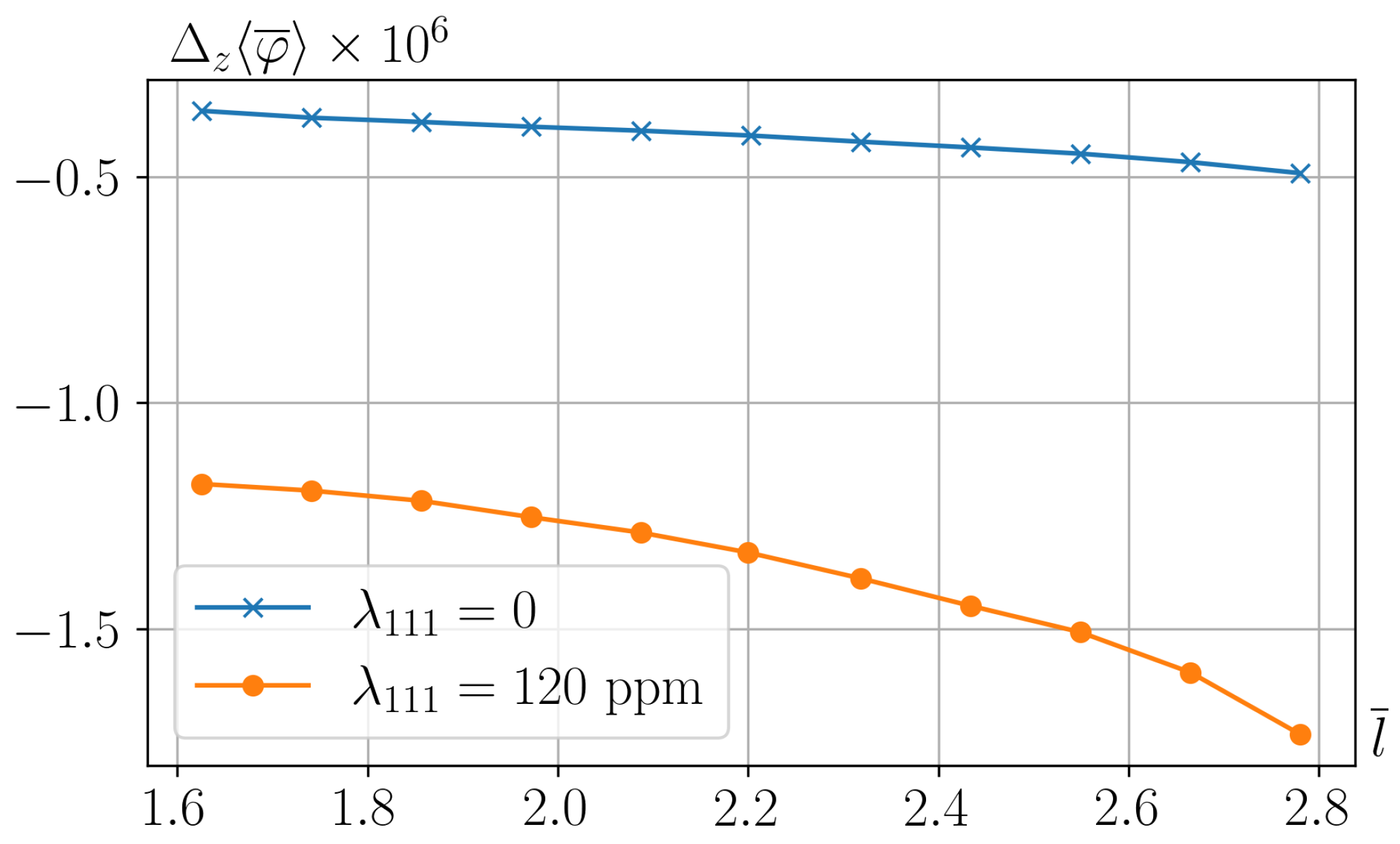
Disclaimer/Publisher’s Note: The statements, opinions and data contained in all publications are solely those of the individual author(s) and contributor(s) and not of MDPI and/or the editor(s). MDPI and/or the editor(s) disclaim responsibility for any injury to people or property resulting from any ideas, methods, instructions or products referred to in the content. |
© 2025 by the authors. Licensee MDPI, Basel, Switzerland. This article is an open access article distributed under the terms and conditions of the Creative Commons Attribution (CC BY) license (https://creativecommons.org/licenses/by/4.0/).
Share and Cite
Stolbov, O.V.; Raikher, Y.L. Magnetoelectric PVDF–Cobalt Ferrite Films: Magnetostrictive and Magnetorotational Effects, Synergy, and Counteraction. Nanomaterials 2025, 15, 487. https://doi.org/10.3390/nano15070487
Stolbov OV, Raikher YL. Magnetoelectric PVDF–Cobalt Ferrite Films: Magnetostrictive and Magnetorotational Effects, Synergy, and Counteraction. Nanomaterials. 2025; 15(7):487. https://doi.org/10.3390/nano15070487
Chicago/Turabian StyleStolbov, Oleg V., and Yuriy L. Raikher. 2025. "Magnetoelectric PVDF–Cobalt Ferrite Films: Magnetostrictive and Magnetorotational Effects, Synergy, and Counteraction" Nanomaterials 15, no. 7: 487. https://doi.org/10.3390/nano15070487
APA StyleStolbov, O. V., & Raikher, Y. L. (2025). Magnetoelectric PVDF–Cobalt Ferrite Films: Magnetostrictive and Magnetorotational Effects, Synergy, and Counteraction. Nanomaterials, 15(7), 487. https://doi.org/10.3390/nano15070487






